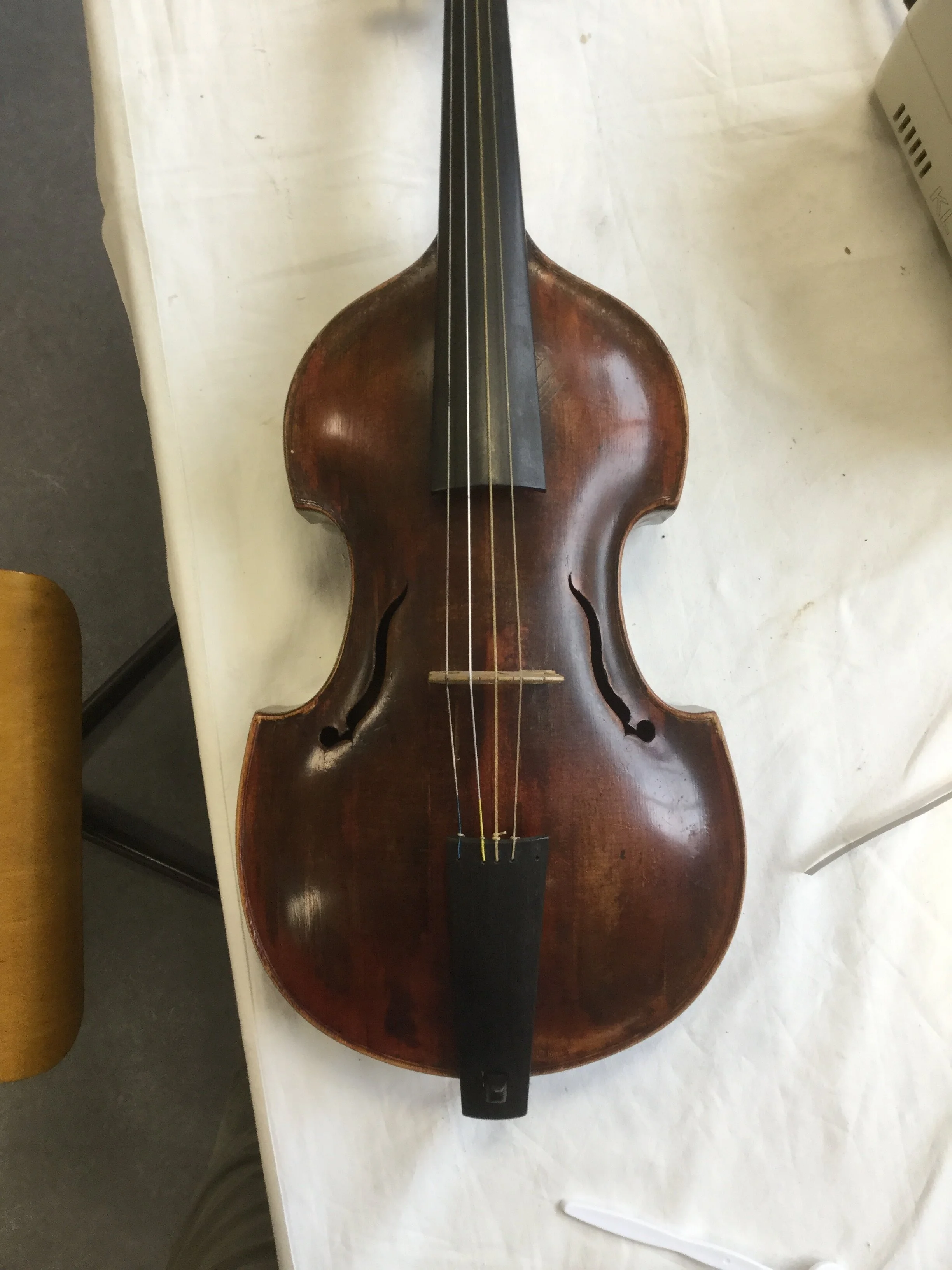a viola d’amore by J.U. Eberle, Prague, 1737
This instrument is kept at the German National Museum in Nuremberg and was the first of a succession of instruments that I have measured by J.U. Eberle.
Body Length: 39.5cm
Stop Length: 210mm
This instrument has been converted to a ‘modern’ Viola and does not retain its original neck, but looking at the body length, the date of 1737 and it’s similarity to other instruments that I have since measured by this maker, it looks highly likely that the instrument originally had 7 playing strings and possibly 7 sympathetics. Both the body and stop lengths, when calculated, suggest an original string length of around 36.5cm.
The back and ribs are made from Birds-eye Maple and is free of any decoration and purfling. The front is from fine-grained Spruce and has a single line of purling. The Varnish is a chestnut red-brown.
Looking inside- a wooden dowel can be seen on the inside of the top block, suggesting the neck attachment of a wooden pin or dowel used to secure the neck whilst gluing. The instrument has undergone some intensive repair at some point to re-inforce the lower treble side of the back, but it shows a typical soundpost plate as well as corner blocks, wooden linings and cross braces.
The back has one fold or break in the upper bouts and also tapers gradually towards the lower end- The ribs are highest in the C bouts and lowest at the neck and tail end, making the instrument easier to hold and play whilst keeping good internal volume to the body.
Also note the cross curvature to the ‘flat’ back, as well as the overlapping rib joints. (no miter joints needed!)
The fingerboard and tailpiece are both newer replacements, done when the instrument was converted to a Viola and the hook bar/post tailpiece attachment looks to be a more recent addition, but there was likely a similar bar there before the conversion. It is difficult to ascertain the number of sympathetic strings this instrument had because there are no signs of pins or nails in the lower block.










